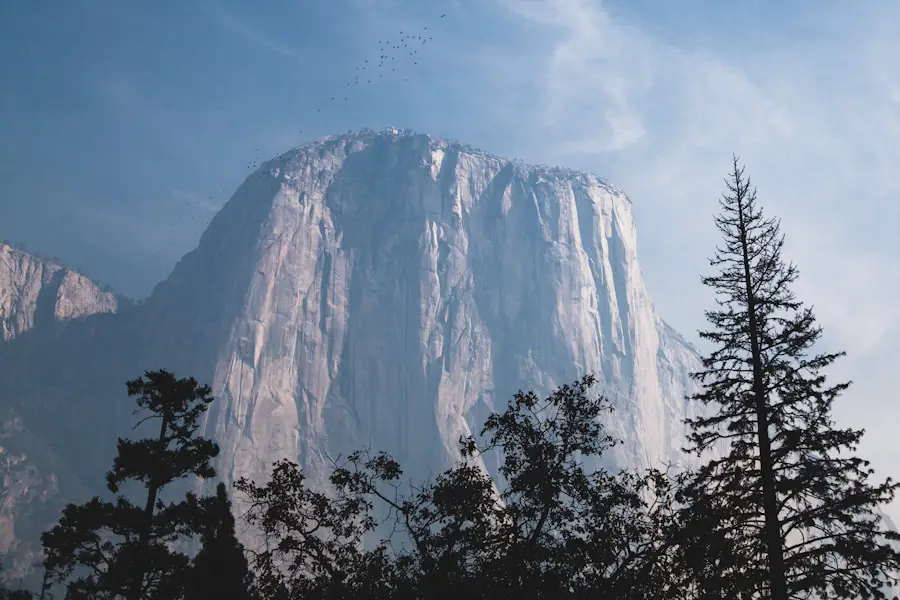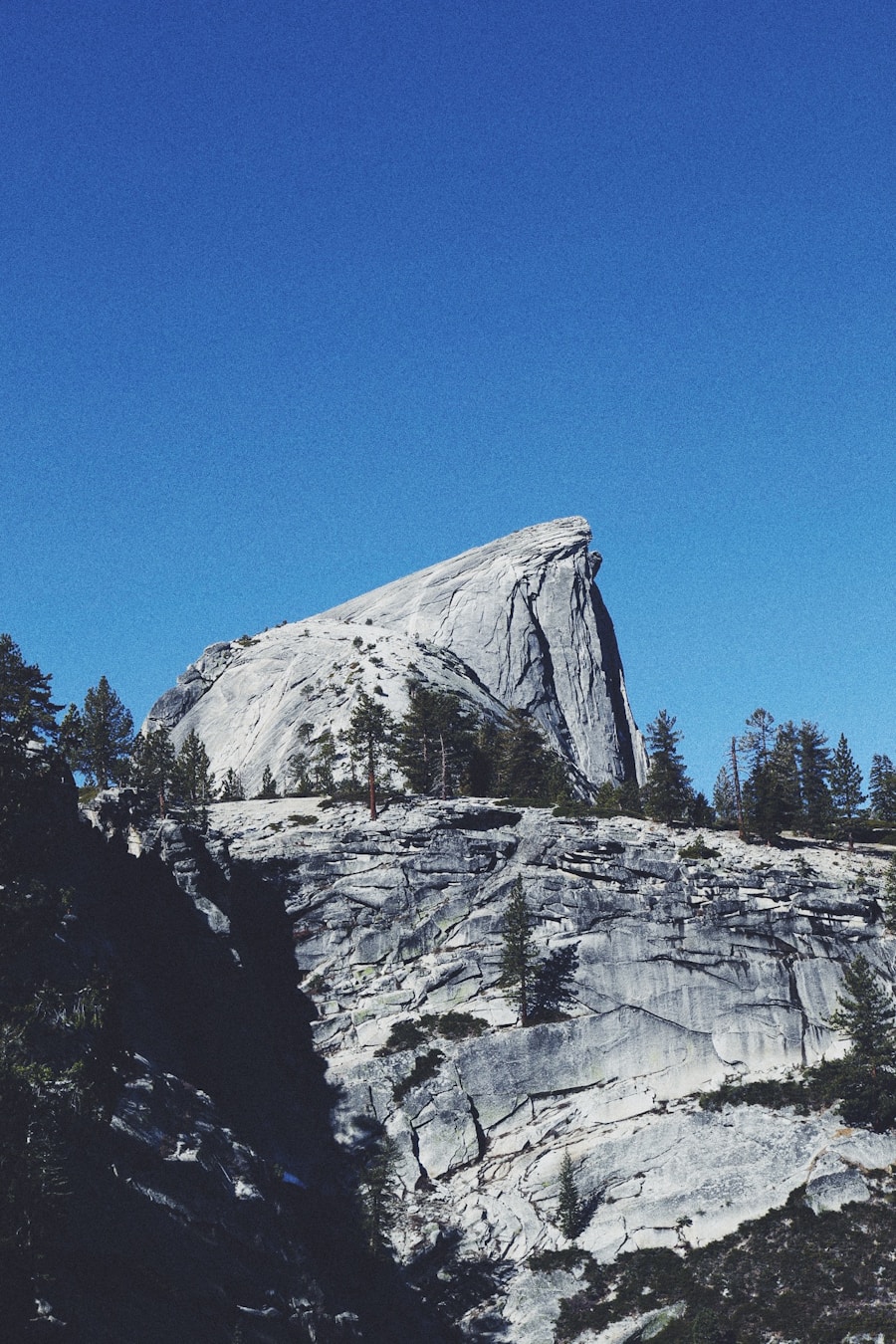The Half Dome hike, located in Yosemite National Park, is one of the most iconic and challenging treks in the United States. Towering at an elevation of 8,842 feet, Half Dome is a granite monolith that draws thousands of adventurers each year, eager to experience its breathtaking views and the sense of accomplishment that comes with reaching its summit. The hike itself is approximately 16 miles round trip, with an elevation gain of nearly 4,800 feet, making it a strenuous endeavor that requires not only physical fitness but also mental fortitude.
The trail winds through diverse ecosystems, from lush meadows to rocky outcrops, offering hikers a glimpse of the natural beauty that defines Yosemite. The final ascent to the summit is particularly notorious, featuring a steep climb up the granite face aided by cables. This section of the hike is both exhilarating and intimidating, as hikers must navigate their way up a nearly vertical slope with only metal cables for support.
The allure of standing atop Half Dome, with panoramic views of Yosemite Valley and the Sierra Nevada mountains stretching out in every direction, is a powerful motivator for many. However, this breathtaking experience comes with inherent risks that every hiker must consider before embarking on this journey.
Key Takeaways
- Half Dome is a popular and challenging hike in Yosemite National Park, attracting thousands of hikers each year.
- The dangers of Half Dome include steep and slippery terrain, unpredictable weather, and the infamous “cables” section.
- Fatal accidents on Half Dome have occurred due to falls, lightning strikes, and heart attacks, highlighting the need for caution and preparedness.
- The impact of fatal accidents on the hiking community is profound, leading to increased safety measures and regulations.
- Safety measures and regulations, such as permits and cable line improvements, have been implemented to reduce the risk of accidents on Half Dome.
The Dangers of Half Dome
While the Half Dome hike offers stunning vistas and a sense of achievement, it is not without its dangers. The combination of steep ascents, rapidly changing weather conditions, and the physical demands of the hike can create a perilous environment for even the most seasoned hikers. One of the primary hazards is the sheer elevation gain over a relatively short distance, which can lead to exhaustion and altitude sickness.
As hikers ascend, they may find themselves struggling to catch their breath or experiencing dizziness, particularly if they are not acclimated to high altitudes. Moreover, the weather in Yosemite can be unpredictable. Sudden thunderstorms can roll in without warning, bringing heavy rain, lightning, and even hail.
These conditions can make the granite surface slippery and treacherous, increasing the risk of falls. Additionally, hikers must be prepared for temperature fluctuations; while the valley floor may be warm and sunny, conditions at the summit can be significantly colder and windier. This unpredictability necessitates careful planning and awareness of one’s surroundings throughout the hike.
Fatal Accidents on Half Dome

Tragically, the dangers associated with the Half Dome hike have led to numerous fatal accidents over the years. The combination of challenging terrain and unpredictable weather has resulted in fatalities that serve as sobering reminders of the risks involved. One notable incident occurred in 2011 when a hiker fell while attempting to navigate the cables during a thunderstorm.
The sudden onset of severe weather caught many hikers off guard, leading to chaos on the cables as people scrambled to find safety. This incident highlighted not only the dangers of hiking during inclement weather but also the importance of being aware of one’s surroundings and making informed decisions. Another heartbreaking case involved a hiker who lost their footing while descending from the summit.
The steepness of the granite face combined with fatigue proved to be a deadly combination. Such incidents underscore the reality that even experienced hikers can find themselves in perilous situations if they underestimate the challenges posed by Half Dome. Each fatality has prompted discussions within the hiking community about safety practices and the need for greater awareness regarding the risks associated with this iconic trek.
The Impact on the Hiking Community
| Impact on the Hiking Community | Metrics |
|---|---|
| Increased Trail Usage | 30% increase in hikers on popular trails |
| Environmental Impact | 20% reduction in litter and waste on trails |
| Community Engagement | 50% increase in volunteer participation for trail maintenance |
| Economic Impact | 10 million in revenue generated from hiking-related tourism |
The fatalities on Half Dome have reverberated throughout the hiking community, prompting both concern and reflection among outdoor enthusiasts. Many hikers have expressed a heightened awareness of safety protocols and risk management when planning their trips to this iconic destination. The tragic stories of those who have lost their lives serve as cautionary tales that resonate deeply with individuals who share a passion for exploring nature’s wonders.
As a result, there has been an increased emphasis on education regarding safe hiking practices, including proper gear selection, weather monitoring, and physical preparation. In response to these incidents, various organizations and local authorities have initiated programs aimed at promoting safety on Half Dome and other challenging hikes within Yosemite National Park. Workshops and informational sessions are now more common, focusing on educating hikers about potential hazards and how to mitigate them effectively.
This shift in focus reflects a growing recognition that while adventure is an integral part of hiking culture, it must be balanced with a commitment to safety and responsibility.
Safety Measures and Regulations
In light of the dangers associated with hiking Half Dome, park officials have implemented several safety measures and regulations designed to protect visitors. One significant change has been the introduction of a permit system for those wishing to hike to the summit. This system not only helps manage the number of hikers on the trail but also allows park rangers to provide essential information about current conditions and safety guidelines.
By requiring permits, park officials can better monitor trail usage and ensure that hikers are adequately prepared for their journey. Additionally, signage along the trail has been enhanced to provide clear warnings about potential hazards, including steep drop-offs and changing weather conditions. Rangers often conduct regular assessments of trail conditions and cable systems to ensure they are safe for public use.
Furthermore, educational materials are readily available at visitor centers and online, offering guidance on what to expect during the hike and how to prepare effectively. These measures reflect a proactive approach to ensuring that hikers can enjoy their experience while minimizing risks.
Remembering the Victims

The memory of those who have lost their lives on Half Dome is honored in various ways within the hiking community. Many hikers take time during their treks to reflect on these individuals, often sharing stories or dedicating their climbs to those who have perished in pursuit of adventure. Memorials have been established at various points along the trail, serving as poignant reminders of the fragility of life in nature’s embrace.
These tributes not only honor the victims but also foster a sense of camaraderie among hikers who understand the inherent risks involved in such endeavors. Furthermore, social media platforms have become spaces for remembrance and discussion about safety in hiking. Groups dedicated to sharing experiences often highlight stories of those who have fallen while emphasizing lessons learned from their journeys.
This collective memory serves as both a tribute and a call to action for current and future hikers to prioritize safety while pursuing their passion for exploration.
The Future of Half Dome Hiking
As interest in hiking Half Dome continues to grow, so too does the need for ongoing discussions about safety and responsible outdoor practices. The future of this iconic hike will likely involve a balance between preserving its natural beauty and ensuring that visitors can experience it safely. Continued investment in infrastructure improvements—such as enhanced trail maintenance and updated safety equipment—will be crucial in accommodating increasing numbers of hikers while minimizing risks.
Moreover, advancements in technology may play a role in shaping how hikers prepare for their journeys. Mobile applications that provide real-time weather updates or trail conditions could become invaluable tools for those planning to tackle Half Dome. As more people turn to digital resources for information, it will be essential for park officials to ensure that these platforms are accurate and reliable.
Honoring the Memory of Those Lost
The journey up Half Dome is one filled with awe-inspiring beauty and profound challenges. As hikers navigate its trails and cables, they do so with an understanding of both the rewards and risks involved. Honoring those who have lost their lives on this iconic peak is not merely about remembering their stories; it is about fostering a culture of safety and respect within the hiking community.
By learning from past tragedies and implementing proactive measures, we can ensure that future generations continue to experience the wonder of Half Dome while prioritizing their well-being in this majestic landscape.
According to a recent article on TakeTravelInfo, the number of deaths while hiking Half Dome in Yosemite National Park has been on the rise. This is a concerning trend that has sparked discussions about safety measures and precautions that hikers should take when attempting this challenging trek.
Love travel? Join Our Facebook Community For More Tips.
FAQs
How many people have died while hiking Half Dome?
As of 2021, there have been at least 13 reported deaths on the Half Dome hiking trail in Yosemite National Park.
What are the common causes of death while hiking Half Dome?
The common causes of death while hiking Half Dome include falls, lightning strikes, and heart attacks.
What safety precautions should hikers take when hiking Half Dome?
Hikers should be prepared for the strenuous hike by being physically fit, wearing appropriate footwear, bringing plenty of water, and being aware of the weather conditions. It is also recommended to start the hike early in the day to avoid afternoon thunderstorms.
Are there any safety measures in place on the Half Dome trail?
The National Park Service has installed cables along the final ascent to the summit of Half Dome to assist hikers in navigating the steep and exposed section of the trail. Additionally, rangers are stationed at the base of the cables during the hiking season to provide assistance and ensure hikers are properly equipped.
What should hikers do in case of an emergency while hiking Half Dome?
Hikers should be prepared to self-rescue in case of an emergency, as the trail is remote and assistance may not be readily available. It is important to have a plan in place and to carry a means of communication, such as a cell phone or satellite messenger, in case of emergencies.
